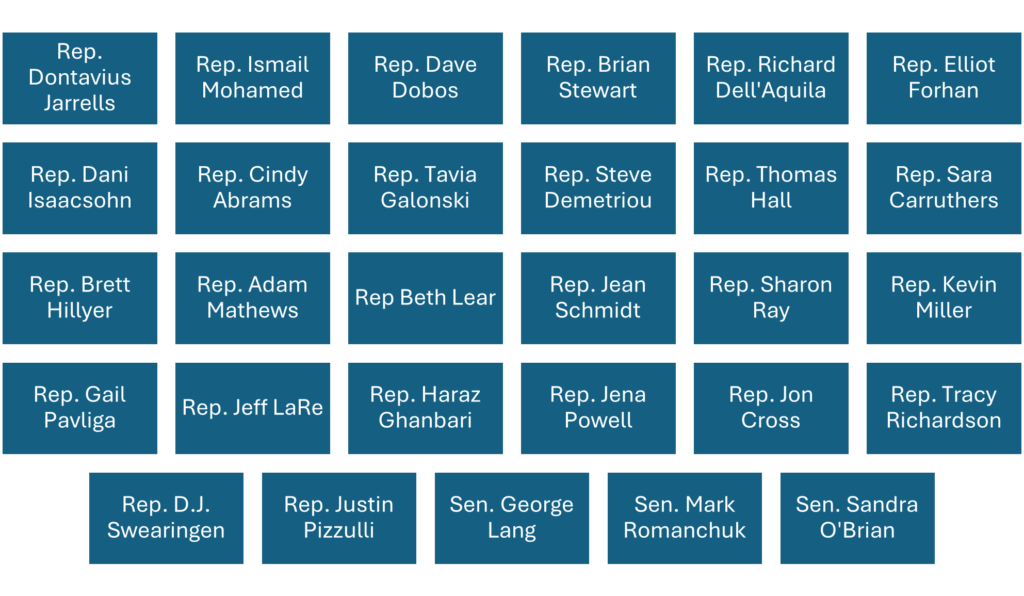After ringing in the new year, Ohio is also kicking off the 2024 election cycle and racing towards the March 19 primary. This year’s primary not only features the nomination to determine which candidates will represent their party for President of the United States, and who will go up against Senator Sherrod Brown for Ohio’s second U.S. Senate seat in the fall, but several races where challengers filed petitions to take on incumbent members of the Ohio General Assembly, including challenges to members of both the Ohio House and Ohio Senate.
Challenges to incumbent members are not unheard of during each election cycle, but the December 20th filing deadline brought with it an uncommon number of contests impacting statehouse incumbents. The rise in primaries is a bi-partisan affair, with both democrat and republican members of the legislature seeing opponents step forward to attempt to unseat the current representative or senator. Although many of the races impacted during the primary certainly leans towards the majority republican party and of those contests the Ohio House has a significant amount impacting current members.
There are several issues, which have created an environment to see so many challenges this time around. The rise of populism on both sides of the aisle and high-profile issues including proposed constitutional amendments, has created unrest within the political parties and because Ohio is a solidly conservative state, these intra-party fights are more prevalently felt within the republican majorities. Recent results at the ballot, which saw the failure of a legislative proposal to change the method to amend Ohio’s constitution by increasing the percentage of voter support for a constitutional amendment to pass, as well as the passage in November of a constitutional amendment that guarantees access to abortion in the wake of the U.S. Supreme Court’s decision to overturn Roe v. Wade and leave it to the states to determine any regulations has created some disagreements about the direction and focus of the legislative agenda in the state.
Underlying the normal party differences is a potential leadership fight in the Ohio House as well as a year-old hangover from the election of Ohio House Sparker Jason Stephens. This time last year brought the beginning of the current 135th General Assembly and another fight for leadership in the Ohio House, which resulted in Republican Speaker Jason Stephens winning the gavel with the support of 21 of his republican colleagues and the minority party democrats. Over the past 12 months some members of the caucus who didn’t support Speaker Stephens have yet to offer their full support to the speaker demonstrating a lack of caucus unity at times during the year’s legislative work. This has led to the next potential leadership challenge in the Ohio House which could include State Senator Matt Huffman who is currently the Ohio Senate President, who will be term-limited at the end of this year and is running for the 78th House District. If successful in the November General Election, many believe there could be a challenge for the top job in the Ohio House when the new General Assembly begins in 2025.
By our count there are 17 contested republican primaries and a total of 26 both Republicans and Democrats challenging incumbent members and a host of others for open seats in the Ohio House. Based on the results of these elections could very well impact the work the legislature does over the next 12 months and the potential of another leadership contest in 2025.
2024 Incumbent General Assembly Member Primary Races
